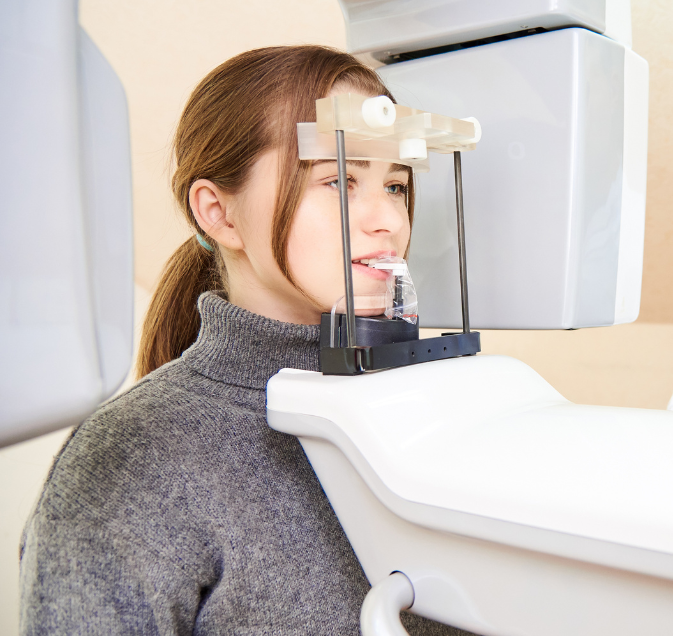
Cone-Beam Computed Tomography in NJ
Cone-Beam Computed Tomography (CBCT) technology allows us to take x-rays in three-dimensions, allowing us to visualize more anatomical structures. It also gives holistic dentists a more accurate representation of the relative position and spatial relationship between anatomical structures, nerves, teeth, blood vessels, and tissues. This allows for more accurate diagnosis of infections, planning of implant placement, assessing facial and cranial anatomy, and airway screening.
Better Technology for Better Treatment
Improved visualization of anatomical structures
Analyze position & orientation of critical structures, such as nerves, vessels, teeth, sinuses, and soft tissue structures prior to treatment
10x less radiation exposure than traditional x-rays
Exposes the patient to far less radiation than traditional x-rays
Better, more effective treatment plans
Helps to better assess risk vs. benefits of treatment options
The Diagnostic Tool Everyone
Should be Using
Earlier detection of oral infections and tumors
Comprehensive TMJ Analysis
Airway studies and sleep apnea screening
Ischemic bone disease screening
Implant treatment planning
What conditions can a
CBCT scan diagnose?
Infections
Tooth and Root Infections
Root Canal Infections
Bone Infections
Tissue Infection
Cavitations
TMJ Analysis
Joint Stress
Joint (Dis)placement
Bone Fractures
Joint Movement
Sleep Apnea and Airway
Airflow Analysis
Tongue Placement Analysis
Trachea & nasal Airflow Analysis
Airway Size Analysis
Bone Analysis & Implants
Bone level Diagnosis
Periodontal Disease Diagnosis
Zirconia Implant Assessment
Zirconia Implant Planning

Yes, a CBCT scan can identify an infected root canal treated tooth much sooner when the level of infection is minimal. On a 2D x-ray, infection will only be seen once it is profound and has destroyed a significant amount of bone.
Does a Cone-Beam Computed Tomography scan show root canal infections?
A CBCT scan is the only x-ray that is able to diagnose jaw bone cavitations, also know Ischemic Bone Disease or Fatty Degenerative Osteonecrosis. Regular 2D radiographs are unable to show bony abnormalities or cavitations.
Does a CBCT show cavitations?
The amount of radiation exposure a Cone-Beam Computed Tomography (CBCT) scan exposes a patient to is less than 90% of a hospital-based CAT scan and 70% less than a chest x-ray. The exposure level is slightly more than 4 bitewings, which are the traditional 2D X-rays taken at the dentist.
